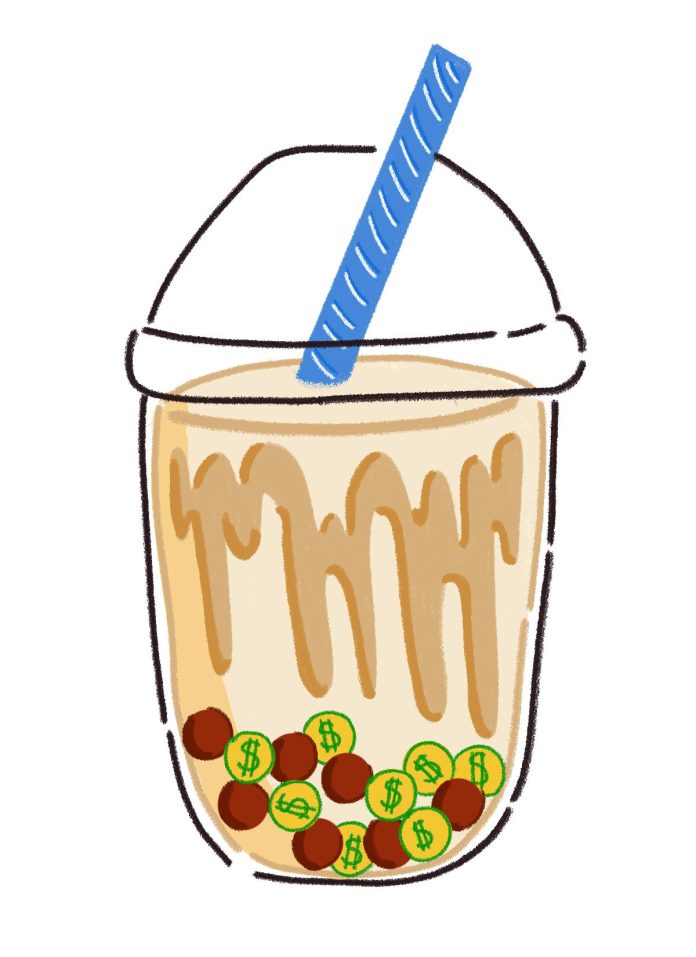Ariel Andres
Staff Writer
Last week, a friend told me about a boba drink from Tea Hut in San Francisco that cost a whopping $10. I wondered to myself, “Is such a price tag ever justifiable?” My first instinct is that unless that was the last boba drink on Earth, I would never purchase it. Other students feel the same way too.
Patricia Wang, a third-year student studying political science and economics said, “Real authentic boba would never cost $10.”
Another third-year student studying economics said, “I would never buy boba for $10, unless it was gourmet and a man was paying for it.”
That made sense to me, but after my initial reaction, I began to wonder if maybe it would be worth it, so I decided to do a little bit of investigation. Since I would not be able to go to San Francisco and try the actual $10 drink myself, I wanted to try as many boba drinks as I could in Isla Vista and Goleta, and try to imagine how much better a $10 boba drink could be. After that, I tried to look into any deeper reasons for why boba would be so expensive.
I ended up buying six boba drinks with prices ranging from $4 to $7.50, and I unfortunately could not find anything more expensive in the area. I wanted to have a variety of drinks to ensure that I didn’t miss out on any that could potentially be worth $10. Three of the drinks were milk tea and the other three were fruit tea, and they were all different flavors.
I purchased drinks from Ochaya Tea House, Choppa Poke, Phresh Teas, Hana Kitchen, and Woody’s Boba Drinks. Comparing the different drinks, I definitely noticed a clear difference between the cheaper options and the more expensive ones.
For instance, even though every tea I bought had the same level of sweetness and ice, I noticed the cheapest options varied between being either too sweet or too watered down. Moreover, the tapioca pearls themselves were slightly harder and less chewy.
On the other hand, the more expensive drinks had flavors that were more pronounced and vibrant, and one of the fruit teas even had actual slices of fruit in it. The tapioca pearls were soft and chewy, and the overall experience of the drinks was great.
The fact that these teas were already tasty without even coming close to the $10 price tag made me wonder if there was something else influencing such a high cost for a boba drink.
One potential explanation is the boba shortage from earlier this year. Boba has its origins in Taiwan, and they have historically produced about 99 percent of the world’s boba. Having such an incredibly high dependency on one specific region for the entire supply of boba can have catastrophic consequences if something happens to the supply chain.
That’s exactly what happened earlier this year. Once the initial COVID-19 scare in 2020 passed, consumers who were previously scared about the economy and trying to save money suddenly began purchasing online products — most of them coming from Asia — in droves once they realized that the worst of the pandemic had passed. The quick and massive rise in shipments from Asia, including boba from Taiwan and the cassava starch used to make it, overwhelmed U.S. ports, leading to all kinds of shortages and delays.
In fact, Boba Guys, a popular boba shop in San Francisco, announced that they had run out of boba at one point in May. As a result, prices in general are raised in order to deal with such a short supply of boba. The supply chain issues are part of the reason why other food and gas prices have been rapidly increasing in the U.S.
Taking all that into account, it makes a little more sense why boba would be that expensive, but at the end of the day, $10 for a boba drink is still excessive. Cheaper options that taste amazing are all around and I would suggest sticking to those.











